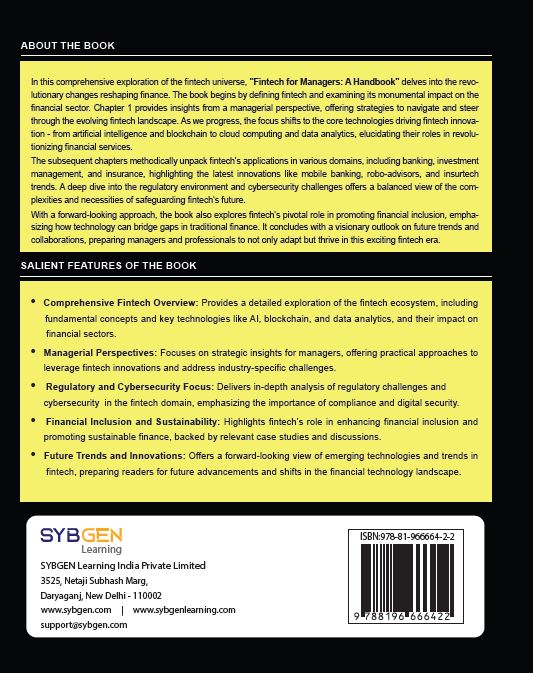Description
In the ever-evolving landscape of financial technology, or fintech, the fusion of finance and technology has not only revolutionized traditional financial services but has also paved the way for groundbreaking innovations. This book aims to demystify fintech, providing readers with a comprehensive understanding of its core technologies, applications, regulatory environment, and prospects. It is designed for managers, professionals, and enthusiasts keen on navigating the fintech ecosystem with adept knowledge and strategic insight.
Our journey begins in Chapter 1, “Introduction to Fintech,” where we lay the foundation by defining fintech and its significant impact on the global economy. We explore the manager’s perspective on fintech, offering insights into steering through the fintech landscape effectively.
Chapter 2 delves into the “Core Technologies in Fintech,” covering essential innovations such as artificial intelligence, blockchain, cloud computing, data analytics, and mobile platforms that are driving the fintech revolution. We dissect each technology’s role in transforming financial services, providing a glimpse into the future of finance.
The book then transitions to specific applications of fintech across various sectors. In Chapter 3, “Fintech Applications in Banking,” we examine how digital transformation, mobile banking, peer-to-peer lending, and open banking strategies are reshaping the banking industry. Chapter 4, “Fintech in Investment Management,” explores the advent of robo-advisors, crowdfunding, asset tokenization, and data-driven strategies that are altering investment paradigms.
Chapter 5, “Insurtech: Fintech in Insurance,” highlights transformative technologies in insurance, digital claims processing, and innovative insurance models, showcasing the insurtech sector’s evolution. The regulatory challenges and strategies for fintech entities are discussed in Chapter 6, “Regulatory Landscape for Fintech,” emphasizing the importance of navigating the complex global regulatory environment.
Cybersecurity, a critical concern for the fintech industry, is addressed in Chapter 7, where we analyze cyber threats, platform security, and data protection measures essential for fintech companies. Chapter 8, “Fintech and Financial Inclusion,” examines fintech’s role in bridging the financial divide, presenting case studies on how technology is facilitating inclusive finance.
In Chapter 9, “Collaborations and Partnerships in Fintech,” the focus shifts to the synergy between fintech and traditional financial institutions, exploring the dynamics of corporate partnerships and strategic alliances within the fintech ecosystem. Finally, Chapter 10, “Future Trends and Innovations,” looks ahead to emerging technologies, sustainable finance, and managerial strategies that will shape the future of fintech.
This book serves as a primer for anyone interested in the fintech domain, offering insights into the technologies and trends that are redefining financial services. Through detailed analysis and case studies, we aim to provide a roadmap for navigating the fintech landscape, equipping readers with the knowledge and tools to thrive in this dynamic field.











